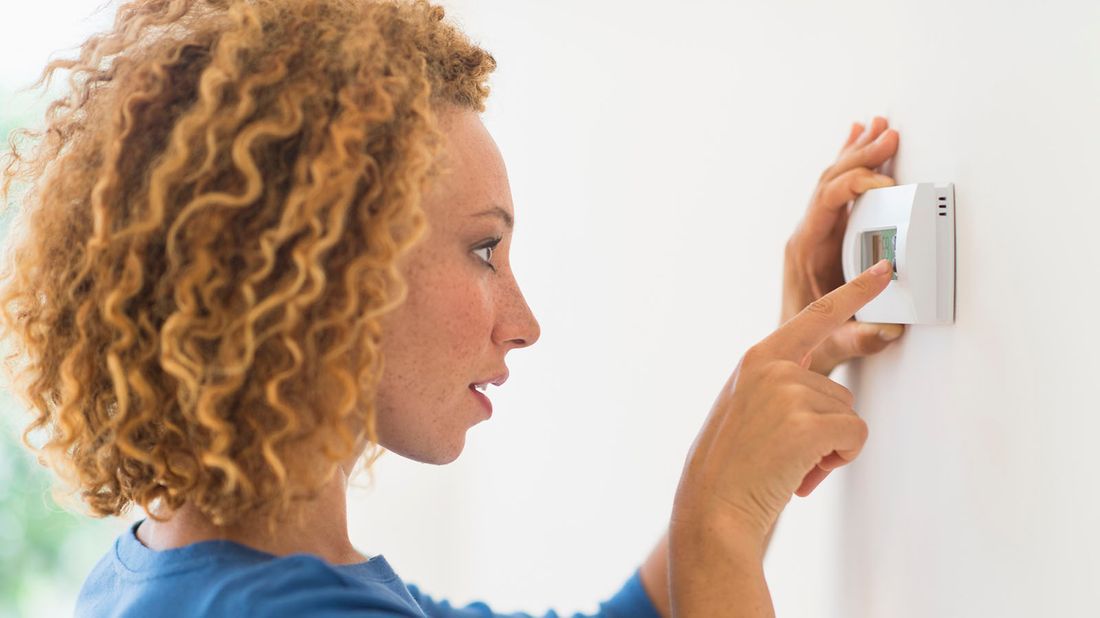How to Lower Your Energy Costs This Winter

After being apartment dwellers for the past 10 years, my family and I were excited to close on our own home last January.
But as new owners of a multistory, 100-year-old home, one big thing caught us off guard: the energy costs. We’d always had heat and hot water included in our rent, so imagine our surprise when, after our first full month, our gas and electric bills came to a whopping $470. We knew we needed to make some changes to keep those costs down.
Here’s how we shaved nearly $150 a month off our total bill, and how you can lower your energy costs this winter.
WE TURNED DOWN THE HEAT
We started with the most obvious thing we could do: We lowered our thermostat. We went from 72 degrees to 68 degrees during the day, and once bedtime rolled around, we’d snuggle underneath the blankets and turn the heat off, unless we felt too cold.
But more often than not, we would forget to turn the heat off at night. So we simplified the routine and bought a smart thermostat for $100 and put ourselves on a schedule. Now, the heat goes off two hours before bedtime and turns back on 30 minutes before we get up. It’ll also kick on automatically at night if the temperature hits 55 degrees.
WE REPLACED OUR COSTLY BULBS
When we moved in, the kitchen in our new home had 11 halogen light bulbs. While they certainly brightened things up during dark winter mornings, after receiving our first electric bill we realized how much costlier they were to keep using. Over time, incandescent and halogen bulbs are four times more expensive to use than LED bulbs. So we replaced the expensive overhead lights and installed several LED lights under our cabinets. They still give the room a nice glow, and only cost us $10 for packs of two.
WE LOWERED OUR WATER HEATER TEMP
I love long, hot showers, so my first inclination was to start taking shorter ones. Then my husband had the bright idea to check the temperature of our water heater — which we learned was well above the recommended 120 degrees. The difference was imperceptible, and it helped lower our bill because the water wasn’t being constantly heated to a higher temperature.
Since we were new to our home, we also decided to have our water heater serviced. While routine maintenance comes with a cost ($170 in our case), we learned it was minimal when compared to the average costs of repairs and replacements.
WE AVOIDED PEAK HOURS
I didn’t know that our utility company offered time-of-use rates, when electricity is cheaper during off-peak hours like early in the morning or late at night. Turns out that running the dryer during the day and the dishwasher right after dinner weren’t the most energy-efficient choices.
We now put our laundry on a timer so that it’s finished by the time we get up, and then we use the dryer first thing in the morning. We also run the dishwasher right before bed rather than midday or in the evening. Of course, this doesn’t always happen — sometimes laundry and dishes need to get done when they need to get done. But we found a little planning made a difference.
OTHER SMALL CHANGES WE MADE
Once we looked at our electricity usage as a family, we found even more small ways to scale back to find energy cost savings.
-
We stopped doing light loads of laundry and waited until we had a full load.
-
We started using a drying rack to air dry clothing items that weren’t heavy.
-
We stopped charging electronics all day and night.
-
We started using the microwave to heat up leftovers and frozen items rather than crank up the oven.
HOW MUCH WE SAVE
After we implemented these changes, we saw our monthly electric bill go from about $186 to $100 and our gas bill from $283 to $220. And the more disciplined we became over time, the more our costs continued to go down.
To prep for this winter, we’ve gone a step further in our efficiency efforts. We decided to have a professional come in to blow insulation into our attic — a steep upfront cost at $1,500, but it means our home is now insulated from top to bottom (including between the ceiling and the roof, and in the floor itself). We’re thinking of it as a long-term investment in keeping our energy costs down: Having a properly insulated house can help homeowners save about 15 percent in heating and cooling costs, according to the EPA.
Related Articles
Feel better about taking action on your dreams.
Your advisor will get to know what’s important to you now and years from now. They can help you personalize a comprehensive plan that gives you the confidence that you’re taking the right steps.
Find your advisor




